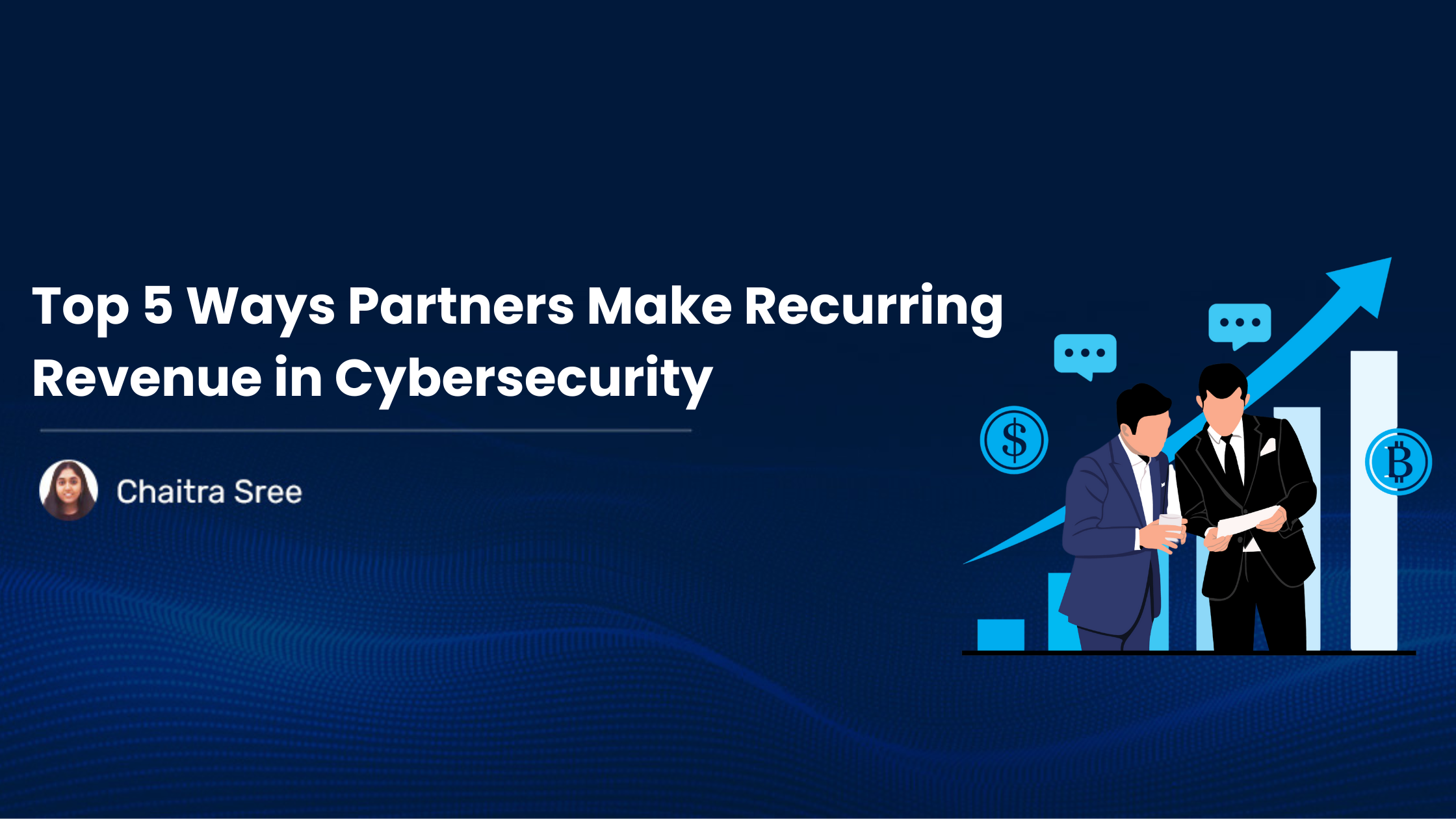Cybersecurity is no longer a one-time project; it’s an everyday necessity. For partners in the industry, that means the real opportunity isn’t just in landing big deals, but in building steady, reliable income that keeps growing over time. Recurring revenue is the key. It smooths out the ups and downs, makes your business more resilient, and ensures you’re adding value for clients every single month.
With threats evolving daily, companies are looking for trusted security partners who can be there for the long term. Whether you run a managed security service, resell solutions, or offer specialist consulting, there are proven ways to turn that ongoing need for protection into predictable income.
Here are five of the most effective and profitable ways partners can create recurring revenue in cybersecurity.
Top 5 Ways for Recurring Revenue
1. Managed Security Services
Think of managed security services as the subscription version of cybersecurity. Instead of selling a one-time product and waving goodbye, you become the customer’s ongoing security team.
How it works:
- You provide 24/7 monitoring, vulnerability detection, and incident response.
- Customers pay a monthly or yearly fee for peace of mind.
- You use tools like Patch Management (PM), Endpoint Detection and Response (EDR), and vulnerability management platforms to automate a lot of the heavy lifting.
Why it works for recurring revenue:
- Cybersecurity isn’t a one-time job—it’s a constant need.
- Once customers trust you, they rarely switch providers.
- You can bundle services like posture anomaly management, compliance checks, and reporting for even more value.
2. Subscription-Based Security Software
Gone are the days when software came in a box with a one-time license fee. Today, partners can resell or bundle subscription-based security tools and take a share of the ongoing revenue.
Examples:
- Vulnerability management platforms
- Cloud security tools
- Email threat protection
- Compliance automation solutions
How it works:
- You partner with a cybersecurity vendor.
- You sell their software as a subscription (SaaS model).
- You earn commission or margin every month for as long as the customer keeps the subscription.
Why it’s attractive:
- Predictable income for you.
- Affordable entry point for customers.
- Easy to upsell—customers start with one tool and soon need more.
Pro tip: Bundle multiple tools together as a “security essentials kit” for small businesses. They’ll appreciate the simplicity, and you’ll lock in multiple recurring streams.
3. Compliance-as-a-Service
Regulations like GDPR, HIPAA, PCI-DSS, and ISO standards can make business owners sweat. For partners, they’re an opportunity to turn compliance headaches into predictable revenue.
How it works:
- You help businesses meet and maintain compliance.
- You run regular audits, generate reports, and guide them through fixes.
- You charge a recurring fee for ongoing compliance management.
Why it works:
- Compliance isn’t optional and it’s not a one-and-done job.
- Businesses want to avoid fines, legal trouble, and reputational damage.
- You become their trusted compliance partner.
Simple analogy:
Think of it like a tax accountant, but for cybersecurity rules. Instead of once-a-year panic, your clients get year-round assurance.
4. Security Awareness Training
Here’s a secret: one of the biggest cybersecurity risks isn’t a fancy hacking tool—it’s human error. That’s why security awareness training is booming.
How it works:
- You offer training programs that teach employees to spot phishing emails, use strong passwords, and avoid risky behavior online.
- Many vendors provide ready-made training modules you can resell or brand as your own.
- You charge a subscription for continuous learning, refreshers, and simulated phishing tests.
Why it’s perfect for recurring revenue:
- Threats change all the time, so training has to be ongoing.
- Businesses want to show proof of training for compliance purposes.
- It’s a low-cost add-on that’s easy to sell with other services.
5. Incident Response Retainers
Imagine a fire department that gets paid whether or not there’s a fire. That’s essentially what incident response retainers are for cybersecurity partners.
How it works:
- Clients pay you a fixed monthly or yearly fee.
- If they have a breach, you jump in immediately to contain and resolve it.
- If they don’t have a breach, they still pay for the readiness and priority access.
Why it’s a win-win:
- You get a steady income without waiting for an incident.
- Clients get peace of mind knowing help is on standby.
- It often leads to upselling additional preventive services
Why Recurring Revenue is the Future for Cybersecurity Partners
The cybersecurity market is expected to grow to $298 billion by 2028 (Statista). The threats are getting bigger, and so are the budgets. Businesses want partners they can trust for the long haul, not just for emergencies.
With recurring revenue models:
- Your income is predictable
- Your customer relationships deepen
- Your business is more scalable
Final Thoughts
The world doesn’t take a day off from cyber threats—and that’s exactly why recurring revenue works so well in this industry. Whether you’re managing security, reselling software, handling compliance, training teams, or standing by for incidents, each model keeps the cash flowing while keeping clients safe.
For partners, the goal is simple: become essential, stay relevant, and deliver value every month. Do that, and your recurring revenue will take care of itself. Know about SecPod Partner’s Program : https://www.secpod.com/partners/

